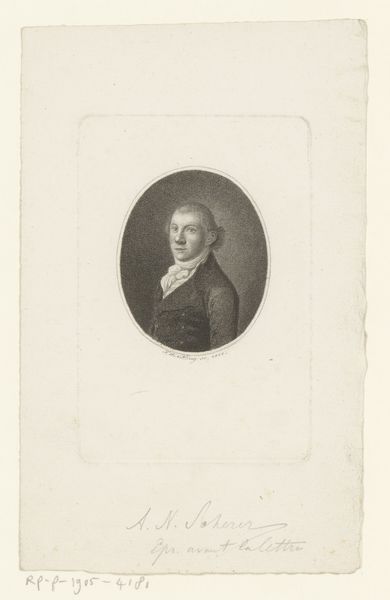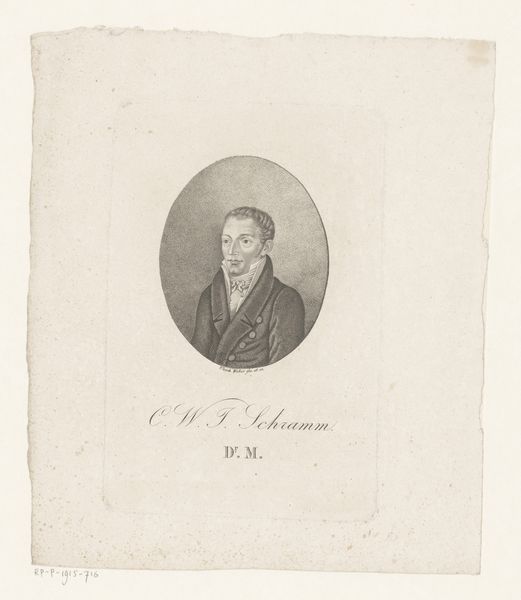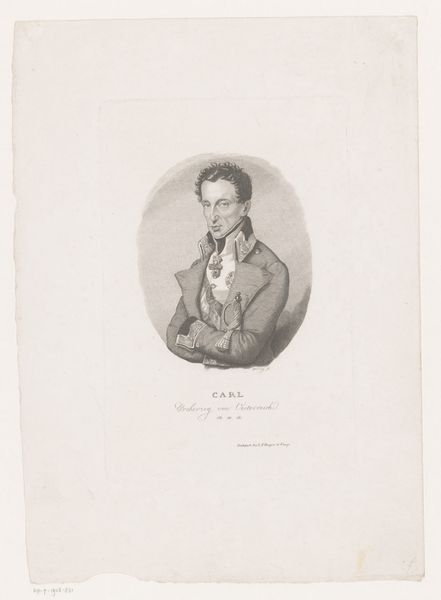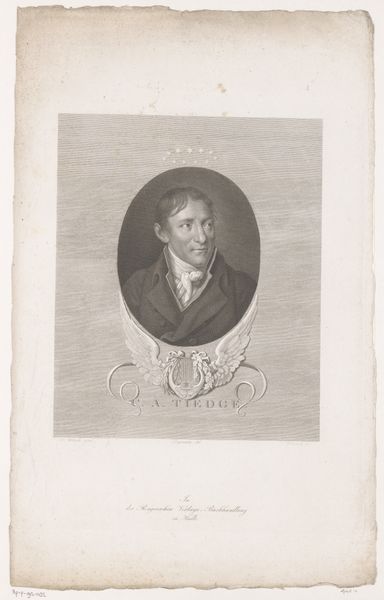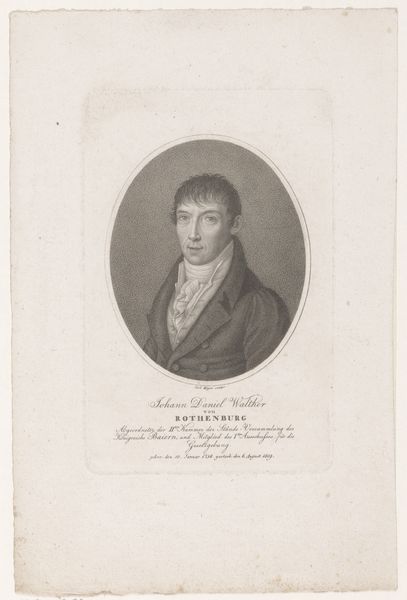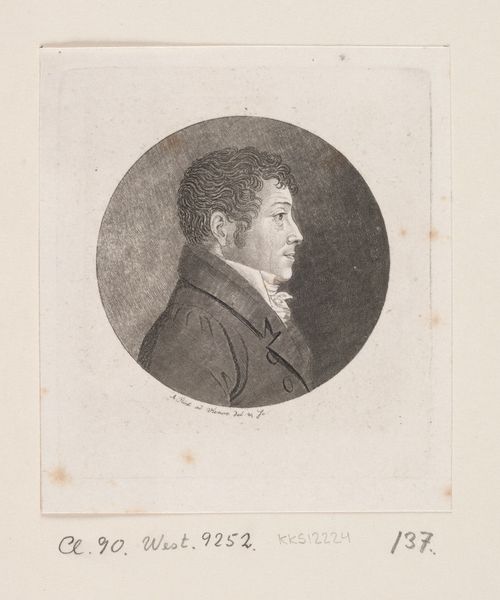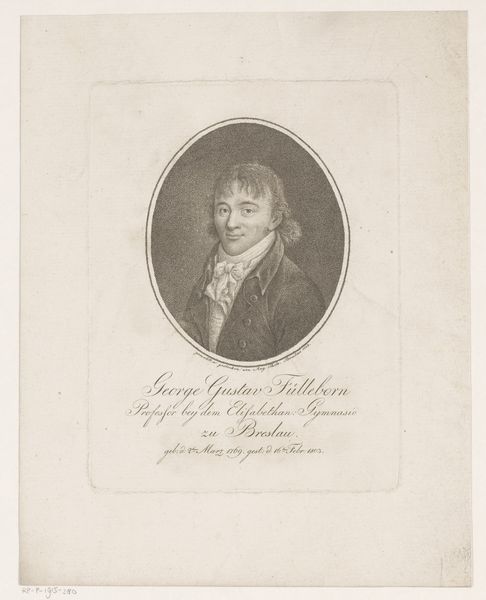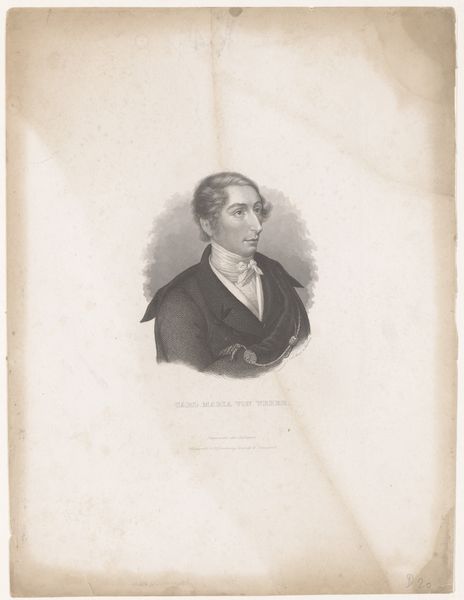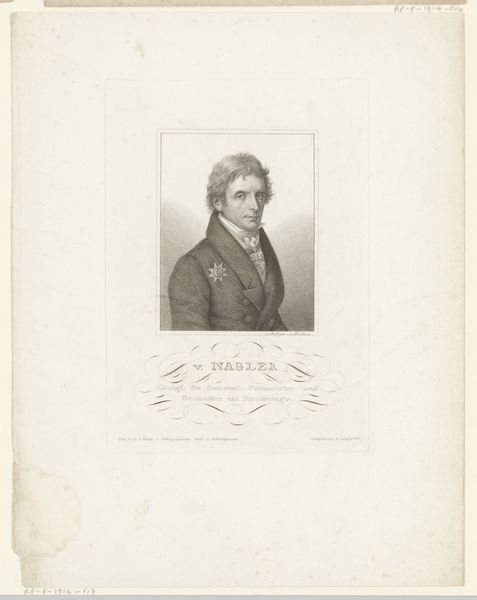
print, engraving
#
portrait
#
neoclacissism
# print
#
old engraving style
#
engraving
#
realism
Dimensions: height 157 mm, width mm
Copyright: Rijks Museum: Open Domain
Editor: We’re looking at a print, an engraving actually, titled "Portret van Karl Wilhelm Schmidt." It seems to be from around 1796 to 1855 by Christian Ermer. I’m struck by its…I don't know...stark formality. It has such a sense of historical gravitas, almost intimidating! What do you make of it? Curator: Intimidating, eh? That’s an interesting first impression! It IS rather serious. And you know, these prints served a really interesting purpose. Think of them as, like, 18th-century celebrity headshots. Ermer, and his contemporaries, weren't just creating images; they were shaping perceptions of importance. Do you feel the Neoclassical influence pushing the realism? Editor: I can see what you mean. I hadn’t thought about it that way, as a kind of…public relations move? The face seems very precise and objective. So, how does the neoclassical influence impact this kind of… "PR"? Curator: Think of it this way: Neoclassicism sought to revive the perceived order and virtue of the classical world. By portraying Herr Schmidt in this meticulously detailed, almost idealized manner, Ermer subtly elevates him. You're supposed to associate him with the virtues of ancient Greece and Rome. Did it work? Hard to say, but they sure tried! Editor: That makes total sense! He's not just anyone; he's CLASSIC. So, from what felt purely historical, I now see the strategy! It is kind of like a very fancy LinkedIn headshot from the 1790's. Curator: Exactly! And isn’t it funny how some things never really change? Even with all the filters at our disposal, we are still performing ourselves, still aiming to manage our images. Food for thought, right? Editor: Definitely. It completely reframes how I see the artwork – from a simple portrait to a calculated piece of image-making. Thanks!
Comments
No comments
Be the first to comment and join the conversation on the ultimate creative platform.


